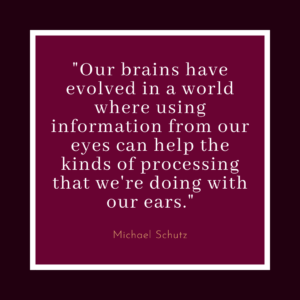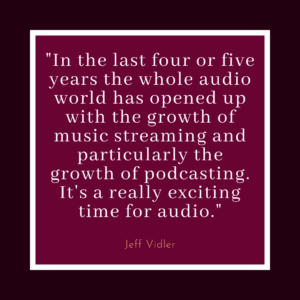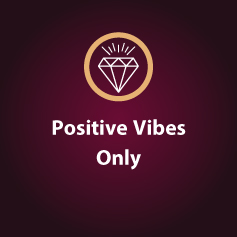Research

Dangerous Beeps: An Interview With Michael Schutz – Part 2
“I think doctors use a term called modifiable risk factor, I’ve learned, because I talk to a lot of doctors now, and so there are some things we can modify and some things that we can’t. And so these alarm sounds are very much a modifiable risk factor, and we need to work together to […]

Dangerous Beeps: An Interview With Michael Schutz – Part 1
“Ultimately the sound is almost irrelevant to the musical experience, with the important caveat that what matters about the sound is the psychological process it triggers in the mind of the listener. So it obviously plays an important role there, but what really matters is how it’s being perceived and how it’s being heard. So […]

Podcasting By Numbers: An Interview with Jeff Vidler – Part 2
“Voice does communicate so much more meaning than what you can read. No matter how well written it is, it’s still the voice that really carries the meaning of the feeling of that, and you know as a voice actor how important that is and how much more it communicates.” Jeff Vidler This week’s the […]

Podcasting By Numbers: An Interview with Jeff Vidler – Part 1
“It’s a gift to listeners. If you make your podcast a gift to listeners, they’ll appreciate the fact that you gave them that gift and they’ll remember you for that and they’ll think better of you for that as a brand.” Jeff Vidler This week’s guest has remained at the forefront of changing audio landscape. […]

Music of the Spheres
“In space, no one can hear you scream.” At least not according to a certain famous movie tagline, and for the most part, it’s absolutely right. Sound as we know it travels as vibrating waves through matter, and there just isn’t enough of it in the vacuum of space to carry sound. But that doesn’t […]

Positive Vibes Only
Most of us grew up learning that the human body has five senses: sight, sound, touch, taste and smell. Everything we know about the world around us comes to us through these senses. We see colors and we hear music. We taste whether our coffee has sugar in it and, especially now that we’re heading […]